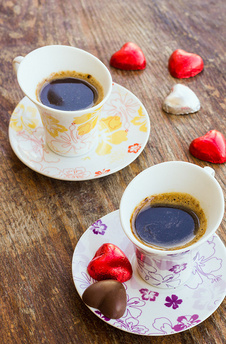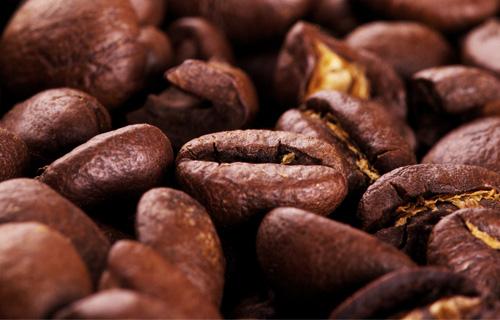Salvadoran coffee flavor, Salvadoran coffee taste how
Follow the caf é (Wechat official account vdailycom) and found that Beautiful Cafe opened a small shop of its own.
Salvador (S ã o Salvador da Ba í a de Todos os Santos, meaning "San Salvador by Halloween Bay") is a coastal city in northeastern Brazil and the capital of Bahia state. El Salvador has long been called Bahia directly, and it was marked as Bahia in many books and maps before the mid-20th century (for example, in Daniel Defoe's Robinson Crusoe). Today, many local people still use Bahia as the name of El Salvador, while many others in Brazil call the state Bahia. The climate belongs to the tropical rain forest climate, when there is no special drought. The temperature is relatively constant throughout the year.

Coffee: 100% Arabica coffee beans
Treatment method: washing and sun treatment
Coffee variety: Bourbon
Particle size distribution: water content 10.48 plus or minus 0.5% (5 repeats)
1.15 percent of raw beans plus or minus 0.15g/CM3
Judge: Mr. Xu Guozhi, evaluation baker: Mr. Zhang Bocheng
Judges: Mr. Guo Weiping, Mr. Zhang Wenwei, Mr. Zhang Bocheng, Mr. Zhang Jinyuan.
Auction number: 121107-03
Taste introduction:
Fragrance: sweet flower scent (jasmine, lavender, coffee blossom,) 4 Coffee 6
Sweet orange flavor (lemon orange orange) 1 Candle 6
Sweet berry (cherry, apricot, strawberry), almond, peanut, barley, corn, sugar
Dark chocolate, Swiss chocolate.
Palate: smooth
The secret of the charming aroma of coffee
The taste of coffee is intoxicating, the aroma of coffee is so fascinating that even Napoleon can not resist the charm of coffee, there is such a story.
According to legend, a few days before Napoleon died on St. Helena Island in 1821, his attendant Marshal Bertrand wrote about Napoleon begging: "he asked for twenty times in the morning and asked me if I could give him some more coffee." "No, my lord, the doctor ordered you to drink only one spoonful of coffee. It's not time yet. You have a bad stomach. Drinking early will only make you vomit early. "he has vomited nine times this morning. In the past, he was all-powerful and led an army, and he was a hero everyone feared, but now he has been reduced to begging for coffee and obedient like a child. Begging again and again, being rejected again and again, but not angry. The situation and the scene are sour. "
Many coffee lovers feel the same way about this obsession with coffee, and it is a happy thing to wake up every morning and smell the aroma of coffee. Why is the aroma of coffee so intoxicating? The secret lies in the composition of coffee itself, which is rich in carbohydrates, proteins, organic acids and so on. These ingredients produce a series of reactions in the baking process, resulting in aroma.
Among them, the two important reactions are caramelization (caramelization, oxidation and browning of sugars) and Mena reaction (Maillard reaction, reaction of amino acids with sugars). Both reactions require the participation of sugars, and the rich sucrose in raw beans provides the materials needed for these two reactions. Previous studies also found that there was a positive correlation between sucrose content and coffee bean flavor. It is understood that the sucrose (Sucrose) content of Arabica is twice that of Robusta when it is raw, which explains why the coffee bean flavor of Arabica is better than that of Robusta.
The secret of coffee aroma lies in the caramelization reaction and Mena reaction. Let's take a look at the details of these two reactions.
Caramelization reaction
The sugar in the coffee bean is caramelized at about 170-200 ℃, which is exactly the melting point of sucrose (185 ℃) and the temperature of the explosion stage when the coffee bean is roasted. The product of caramelization is divided into two parts: the dehydration product of sugar, which is caramel or sauce color, and the pyrolysis product, mainly some volatile aldehydes and ketones.
Generally speaking, fire-roasted aroma, caramel and color are produced in the caramelization reaction, as well as other aromatic substances such as maltol, Cyclotene, furan and so on. These compounds can also be found in red wine, fruit juices, cream and other foods.
Mena reaction
Recently, more and more coffee shops set up a baking machine in front of the store to bake by themselves, so that not only the cost can be saved, but also the quality can be controlled by themselves. So walking on the street, you can often smell the unique aroma of roasted coffee beans, including the burning blue smoke smell of plant fibers, the sweet smell of cream, the brown smell of toast, and so on. Most of these rich flavors come from the Mena reaction during baking.
The Mena reaction can be divided into three stages.
First, at the initial stage:
Carbonylamine condensation Amadori molecular rearrangement
Second, in the medium term:
Amadori molecular rearrangement product fructosamine is dehydrated to HMF (hydroxymethylfurfural)
Deamination of fructosamine to reducing ketone
Interaction of amino acids with dicarbonyl compounds
Third, at the end of the year:
Polymerization of Aldol condensation to melanin
Coffee is blessed with a wide variety of complex chemicals, in addition to the above-mentioned compounds, there are other organic acids, inorganic acids, plant bases and so on. Sweet and beautiful ingredients and slightly bitter compounds make the coffee flavor have a wider level and change, together to create a unique rich taste of coffee.
During coffee roasting, the caramelization reaction oxidizes and browns the sugar in the coffee, while the Mena reaction reacts between amino acids and sugars. The successively action of these two reactions is the secret of the coffee's charming aroma.
Important Notice :
前街咖啡 FrontStreet Coffee has moved to new addredd:
FrontStreet Coffee Address: 315,Donghua East Road,GuangZhou
Tel:020 38364473
- Prev

The reason why Crystal Mountain Coffee is so precious
Following Cafe Review (Wechat official account vdailycom) found that Beautiful Cafe opened a small shop of its own. At present, Jingshan Coffee is very precious. This is mainly for two reasons. The first reason is the economic sanctions imposed by the United States against Cuba and the non-opening up of Cuban imports. The second reason is that at present, Cuban coffee beans are mostly acquired by the French and Japanese markets, especially in Japan.
- Next

Characteristics of Salvadoran coffee beans, how to drink Salvadoran coffee
Following Cafe Review (official Wechat account vdailycom) found that El Salvador Coffee is a specialty of Central America, where it is light, aromatic, pure and slightly sour. Flavor: balanced taste, excellent texture suggested baking method: medium to deep, have multiple uses in El Salvador Renas Manor (EL Salvado
Related
- Detailed explanation of Jadeite planting Land in Panamanian Jadeite Manor introduction to the grading system of Jadeite competitive bidding, Red bid, Green bid and Rose Summer
- Story of Coffee planting in Brenka region of Costa Rica Stonehenge Manor anaerobic heavy honey treatment of flavor mouth
- What's on the barrel of Blue Mountain Coffee beans?
- Can American coffee also pull flowers? How to use hot American style to pull out a good-looking pattern?
- Can you make a cold extract with coffee beans? What is the right proportion for cold-extracted coffee formula?
- Indonesian PWN Gold Mandrine Coffee Origin Features Flavor How to Chong? Mandolin coffee is American.
- A brief introduction to the flavor characteristics of Brazilian yellow bourbon coffee beans
- What is the effect of different water quality on the flavor of cold-extracted coffee? What kind of water is best for brewing coffee?
- Why do you think of Rose Summer whenever you mention Panamanian coffee?
- Introduction to the characteristics of authentic blue mountain coffee bean producing areas? What is the CIB Coffee Authority in Jamaica?

